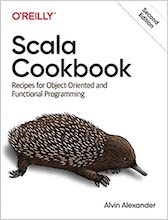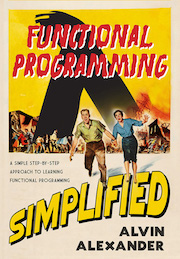Tomcat example source code file (fs-admin-apps.xml)
The Tomcat fs-admin-apps.xml source code
<?xml version="1.0"?>
<!--
Licensed to the Apache Software Foundation (ASF) under one or more
contributor license agreements. See the NOTICE file distributed with
this work for additional information regarding copyright ownership.
The ASF licenses this file to You under the Apache License, Version 2.0
(the "License"); you may not use this file except in compliance with
the License. You may obtain a copy of the License at
http://www.apache.org/licenses/LICENSE-2.0
Unless required by applicable law or agreed to in writing, software
distributed under the License is distributed on an "AS IS" BASIS,
WITHOUT WARRANTIES OR CONDITIONS OF ANY KIND, either express or implied.
See the License for the specific language governing permissions and
limitations under the License.
-->
<!DOCTYPE document [
<!ENTITY project SYSTEM "project.xml">
]>
<document url="fs-admin-apps.html">
&project;
<properties>
<author email="craigmcc@apache.org">Craig McClanahan
<title>Administrative Apps - Overall Requirements
<revision>$Id: fs-admin-apps.xml 562814 2007-08-05 03:52:04Z markt $
</properties>
<body>
<section name="Overview">
<subsection name="Introduction">
<p>The purpose of this specification is to define high level requirements
for administrative applications that can be used to manage the operation
of a running Tomcat 5 container. A variety of <em>Access Methods
to the supported administrative functionality shall be supported, to
meet varying requirements:</p>
<ul>
<li>As A Scriptable Web Application - The existing
<code>Manager web application provides a simple HTTP-based
interface for managing Tomcat through commands that are expressed
entirely through a request URI. This is useful in environments
where you wish to script administrative commands with tools that
can generate HTTP transactions.</li>
<li>As An HTML-Based Web Application - Use an HTML presentation
to provide a GUI-like user interface for humans to interact with the
administrative capabilities.</li>
<li>As SOAP-Based Web Services - The operational commands to
administer Tomcat are made available as web services that utilize
SOAP message formats.</li>
<li>As Java Management Extensions (JMX) Commands - The operational
commands to administer Tomcat are made available through JMX APIs,
for integration into management consoles that utilize them.</li>
<li>Other Remote Access APIs - Other remote access APIs, such
as JINI, RMI, and CORBA can also be utilized to access administrative
capabilities.</li>
</ul>
<p>Underlying all of the access methods described above, it is assumed
that the actual operations are performed either directly on the
corresponding Catalina components (such as calling the
<code>Deployer.deploy() method to deploy a new web application),
or through a "business logic" layer that can be shared across all of the
access methods. This approach minimizes the cost of adding new
administrative capabilities later -- it is only necessary to add the
corresponding business logic function, and then write adapters to it for
all desired access methods.</p>
<p>The current status of this functional specification is
<strong>PROPOSED. It has not yet been discussed and
agreed to on the TOMCAT-DEV mailing list.</p>
</subsection>
<subsection name="External Specifications">
<p>The implementation of this functionality depends on the following
external specifications:</p>
<ul>
<li>Java
IDL</a> (for CORBA, included in the JDK)
<li>
Java Management Extensions</a>
<li>Remote
Method Invocation</a> (Included in the JDK)
</ul>
</subsection>
<subsection name="Implementation Requirements">
<p>The implementation of this functionality shall conform to the
following requirements:</p>
<ul>
<li>To the maximum extent feasible, all administrative functions,
and the access methods that support them, shall run portably
on all platforms where Tomcat 5 itself runs.</li>
<li>In a default Tomcat distribution, all administrative capabilities
shall be disabled. It shall be necessary for a system
administrator to specifically enable the desired access methods
(such as by adding a username/password with a specific role to
the Tomcat user's database.</li>
<li>Administrative functions shall be realized as direct calls to
corresponding Catalina APIs, or through a business logic layer
that is independent of the access method used to initiate it.</li>
<li>The common business logic components shall be implemented in
package <code>org.apache.catalina.admin.
<li>The common business logic components shall be built as part of the
standard Catalina build process, and made visible in the
Catalina class loader.</li>
<li>The Java components required for each access method shall be
implemented in subpackages of <code>org.apache.catalina.admin.
</li>
<li>The build scripts should treat each access method as optional,
so that it will be built only if the corresponding required
APIs are present at build time.</li>
<li>It shall be possible to save the configured state of the running
Tomcat container such that this state can be reproduced when the
container is shut down and restarted.</li>
<li>Adminstrative commands to start up and shut down the overall
Tomcat container are <strong>out of scope for the
purposes of these applications. It is assumed that other
(usually platform-specific) mechanisms will be used for container
startup and shutdown.</li>
</ul>
</subsection>
</section>
<section name="Dependencies">
<subsection name="Environmental Dependencies">
<p>The following environmental dependencies must be met in order for
administrative applications to operate correctly:</p>
<ul>
<li>For access methods that require creation of server sockets, the
appropriate ports must be configured and available.</li>
</ul>
</subsection>
<subsection name="Container Dependencies">
<p>Correct operation of administrative applications depends on the
following specific features of the surrounding container:</p>
<ul>
<li>To the maximum extent feasible, Catalina components that offer
direct administrative APIs and property setters shall support
"live" changes to their operation, without requiring a container
restart.</li>
</ul>
</subsection>
<subsection name="External Technologies">
<p>The availability of the following technologies can be assumed
for the implementation and operation of the various access methods
and the corresponding administrative business logic:</p>
<ul>
<li>Java 2 Standard Edition
(Version 1.2 or later)</li>
<li>Servlet 2.4
(supported natively by Tomcat 5)</li>
<li>JavaServer Pages 2.0
(supported natively by Tomcat 5)</li>
<li>JavaServer Pages Standard Tag Library 1.0 (Jakarta Taglibs-Standard 1.0.3)
<li>Struts Framework
(Version 1.0) - MVC Framework for Web Applications</li>
<li>TO BE DETERMINED - Application for hosting SOAP
based web services</li>
</ul>
</subsection>
</section>
<section name="Functionality">
<subsection name="Properties of Administered Objects">
<p>Functional requirements for administrative applications are specified
in terms of <em>Administered Objects, whose definitions and detailed
properties are listed <a href="fs-admin-objects.html">here. In general,
Administered Objects correspond to components in the Catalina architecture,
but these objects are defined separately here for the following reasons:</p>
<ul>
<li>It is possible that the administrative applications do not expose
every possible configurable facet of the underlying components.</li>
<li>In some cases, an Administered Object (from the perspective of an
administrative operation) is realized by more than one Catalina
component, at a finer-grained level of detail.</li>
<li>It is necessary to represent the configuration information for a
component separately from the component itself (for instance, in
order to store that configuration information for later use).</li>
<li>It is necessary to represent configuration information (such as
a Default Context) when there is no corresponding component instance.
</li>
<li>Administered Objects, when realized as Java classes, will include
methods for administrative operations that have no correspondence
to operations performed by the corresponding actual components.</li>
</ul>
<p>It is assumed that the reader is familiar with the overall component
architecture of Catalina. For further information, see the corresponding
Developer Documentation. To distinguish names that are used as both
<em>Administered Objects and
Other Tomcat examples (source code examples)Here is a short list of links related to this Tomcat fs-admin-apps.xml source code file: |
 The search page
The search page Other Tomcat source code examples at this package level
Other Tomcat source code examples at this package level Click here to learn more about this project
Click here to learn more about this project
